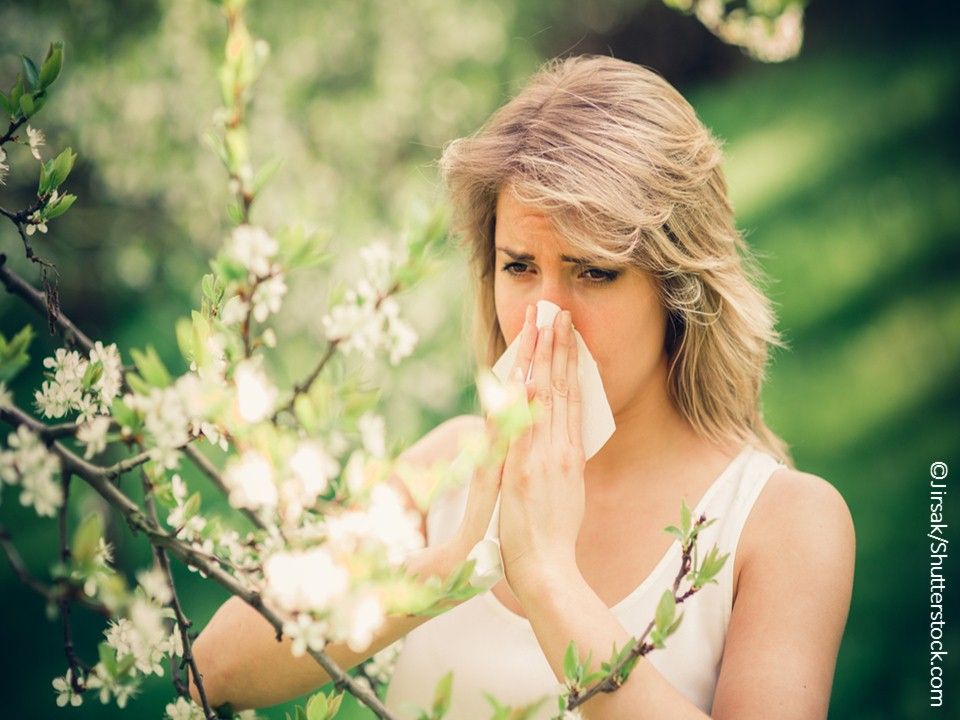Spring Allergy Quiz: "Rx This, Not That"
Try this compact test on safety issues of and patieint selection for seasonal allergy medications.
©Jirsak/Shutterstock.com

1. A 13-year-old girl describes mild to moderate symptoms of stuffy nose, nasal discharge, and sneezing, especially when she plays soccer outside on a grass field. The symptoms usually only appear in the spring. Skin prick test confirms Timothy grass pollen allergy.
What should the initial treatment be?
A. Flonase® nasal spray
B. Grastek®C. Benadryl nasal spray
D. Singulair®
Please click here for answer and next question.
Answer: A. Flonase nasal spray. According to updated 2017 guidelines by the American College of Allergy, Asthma, and Immunology, routine initial treatment in individuals aged ≥12 years with seasonal allergic rhinitis should be monotherapy with intranasal corticosteroids (eg, a fluticasone propionate/Flonase nasal spray).1 Because intranasal antihistamines (eg, Benadryl) are associated with more adverse effects and are less effective than intranasal corticosteroids, they are not the preferred first line option for allergic rhinitis. Likewise, neither Grastek (a sublingual immunotherapy) nor Singulair (montelukast, a leukotriene receptor antagonist) are considered first line.2
2. Which of the following should be avoided during the first trimester in a pregnant woman with seasonal allergic rhinitis?
A. Cromolyn nasal spray
B. Zyrtec
C. Nasonex
D. Pseudoephedrine
Please click here for answer and next question.
Answer: D. Pseudoephedrine. Because the safety of pseudoephedrine during the first trimester of pregnancy has not been confirmed, the medication should be avoided. In particular, pseudoephedrine should not be used by pregnant women with high blood pressure preeclampsia. Nasal sprays control symptoms with less medication than oral drugs and may be preferable in pregnancy. Cromolyn nasal sprays and nasal steroids (with the exception of Nasacort Allergy 24HR, for which some evidence suggests an increased risk of congenital respiratory defects in the first trimester) are considered safe during pregnancy. Antihistamines are also considered safe.3
3. Which of the following ophthalmic topical corticosteroids taken for seasonal allergic conjunctivitis is not associated with cataract formation?
A. Prednisolone
B. Betamethasone
C. Loteprednol etabonate
D. Dexamethasone
Please click here for answer and next question.
Answer: C. Loteprednol etabonate. Topical ketolic corticosteroids (prednisolone, betamethasone, dexamethasone, difluprednate, fluorometholone, medrysone, and rimexolone) form Schiff base intermediates, which are associated with lens protein accumulation and cataract formation. Loteprednol etabonate is a nonketolic ester corticosteroid that does not form Schiff base intermediates and is not associated with cataract formation.4
4. Which of the following can accompany the common cold but is almost never associated with seasonal allergy?
A. General aches and pains
B. Sore throat
C. Fatigue
D. Itchy eyes
Please click here for answer and next question.
Answer: A. General aches and pains. According to the National Institutes of Health,5 general aches and pains can occur with the common cold, but usually never occur with seasonal allergies. Sore throat is common with a cold, and sometimes occurs with seasonal allergies. Fatigue sometimes occurs in both conditions. Itchy eyes are common in seasonal allergies, but rarely or never occur with the common cold.
5. Which of the following treats the ocular symptoms of allergic rhinitis, in addition to nasal itching, sneezing, and discharge?
A. Intranasal corticosteroids
B. Intranasal cromolyn
C. Leukotriene receptor antagonists
D. A and B
E. A and C
Answer: E. A (intranasal steroids) and C (leukotriene receptor agonists). The following treat both the ocular and nasal symptoms of allergic rhinitis: intranasal corticosteroids, combination intranasal corticosteroids and antihistamines, leukotriene receptor antagonists, and immunotherapy. Oral and intranasal antihistamines, oral and intranasal decongestants, intranasal cromolyn, and intranasal anticholinergics do not usually treat the ocular symptoms of allergic rhinitis.2
References:
1. Wallace DV, Dykewicz MS, Oppenheimer J, Portnoy JM, Lang DM. Pharmacologic treatment of seasonal allergic rhinitis: Synopsis of guidance from the 2017 Joint Task Force on Practice Parameters. Ann Intern Med. 2017;167:876-881.
2. Sur DK, Plesa ML. Treatment of allergic rhinitis. Am Fam Physician. 2015;92:985-992.
3. deShazo RD, Kempo SF. Patient education: Allergic rhinitis (seasonal allergies) (Beyond the Basics). UpToDate. https://www.uptodate.com/contents/allergic-rhinitis-seasonal-allergies-beyond-the-basics. Updated February 1, 2017. Accessed May, 10 2018.
4. Bielory BP, O'Brien TP, Bielory L. Management of seasonal allergic conjunctivitis: guide to therapy. Acta Ophthalmol. 2012;90:399-407.
5. NIH. Is it a cold or an allergy? National Institutes of Health Medline Plus. https://medlineplus.gov/magazine/issues/summer11/articles/summer11pg20.html. Accessed May 10, 2018.